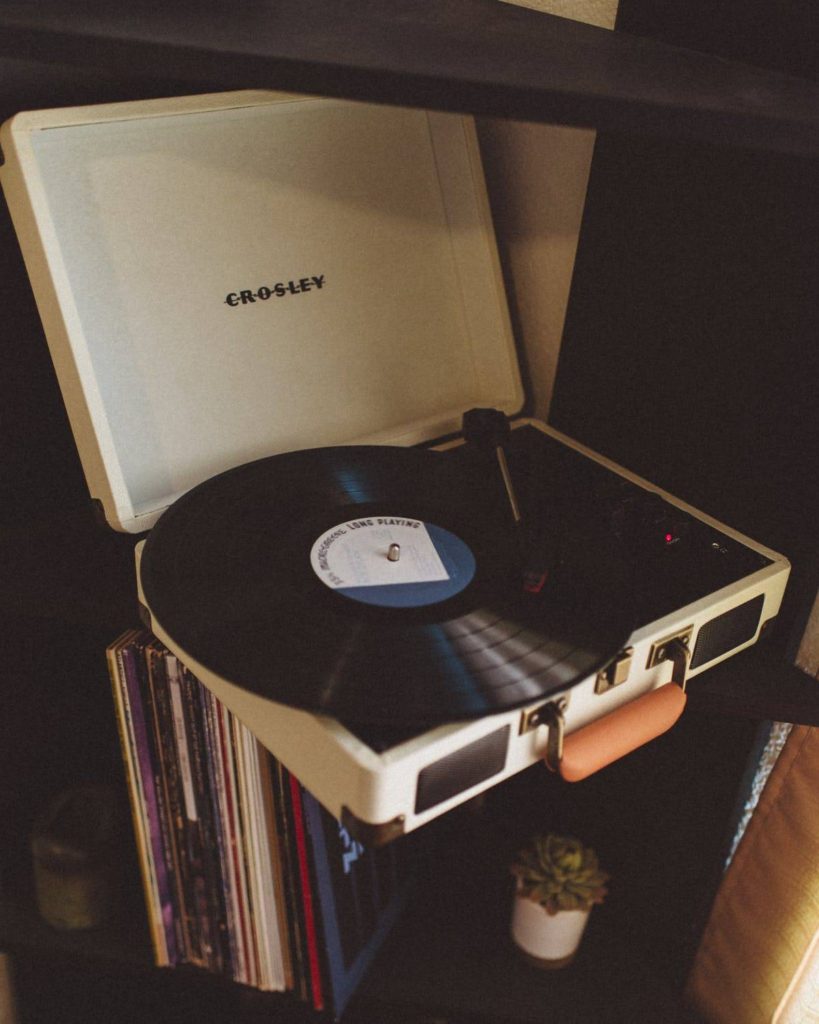
Music in High Fidelity: A Brief History of the Tech that Paved the Way for Sound Today. By Sally Collins.
The first major breakthrough when it comes to in-home music was made in 1877 when Thomas Edison unveiled his creation: the phonograph (you probably know it as a record player). Since then, there have been seemingly endless upgrades and changes to the music scene, particularly in the quality of home systems. What was once top of the line gets phased out in exchange for better sound quality. Still, those initial baby steps were what shaped our modern sound. So how did we go from analogue to hi-fi digital?
The Turntable to Radio
As mentioned, the first in-home sound system of sorts was the record player, and though it made it’s official debut in 1877, it wasn’t until the early 20th century rolled around that it became more of a household fixture. Music was limited to 78 and/or 45 rpm records until the LP came about, which extended play time to an additional 20 minutes per side. In the 1930s, home radios came to life, and they completely revolutionized the music industry for both musicians and consumers. It was the nation’s first means of mass media broadcasting and hosted over 500 stations in the US alone.
Hi-Fi Receivers
After the booming success of the record player and home radios, people wanted to continue to grow the industry by improving sound quality to provide a listening experience that sounded as if they were attending a live concert at home. Harman Kardon (a subsidiary of Samsung) was the developer behind the first receiver that contained both a radio tuner and wider FM bandwidth, along with an amp and pre-amp all in the same unit. This was the real beginning of the golden age and birth of hi-fi stereo.
8 Tracks and Cassette Tapes
While 8 track decks are viewed as an utter ‘failure’ in the industry, they were a big success when they were introduced in the 1960s, and the really contributed to the foundation of music formats to come, namely the cassette tape, which began to spring up in the ‘70s and ‘80s. Cassettes offered more than the 8 track, as they had the ability to not only offer hi-fi sound, but also had the ability to rewind and fast forward. These features quickly laid to rest the good ol’ 8 track.
Compact Disks
Even though most people think of CD’s as a quintessential 90’s item, they were actually invented in the 1980s, with Sony releasing the first commercial CD player. Compact disks delivered better hi-fi sound, stored more music, and allowed for the ability to store via computer. Attempts were made to further improve CD quality with the invention of Super Audio CD’s in 1999, which offered sound quality that was superior to the standard CD. Unfortunately, they carried a high price and limited selection of available music, so they never caught on, and soon MP3 technology made it’s leap into popularity. From that point on, the focus has been placed on wireless technology, and a sort of development cycle has continued, much in the same way that home music first came about.
From the humble record player to the shiny CD, every piece of technology used to hold and play sound to home consumers is dear, for they all played an important role in the technology we have today. The record player walked so that our AirPods could run.
Courtesy of Sally Collins.
More Music Business articles @ The Blogging Musician.



